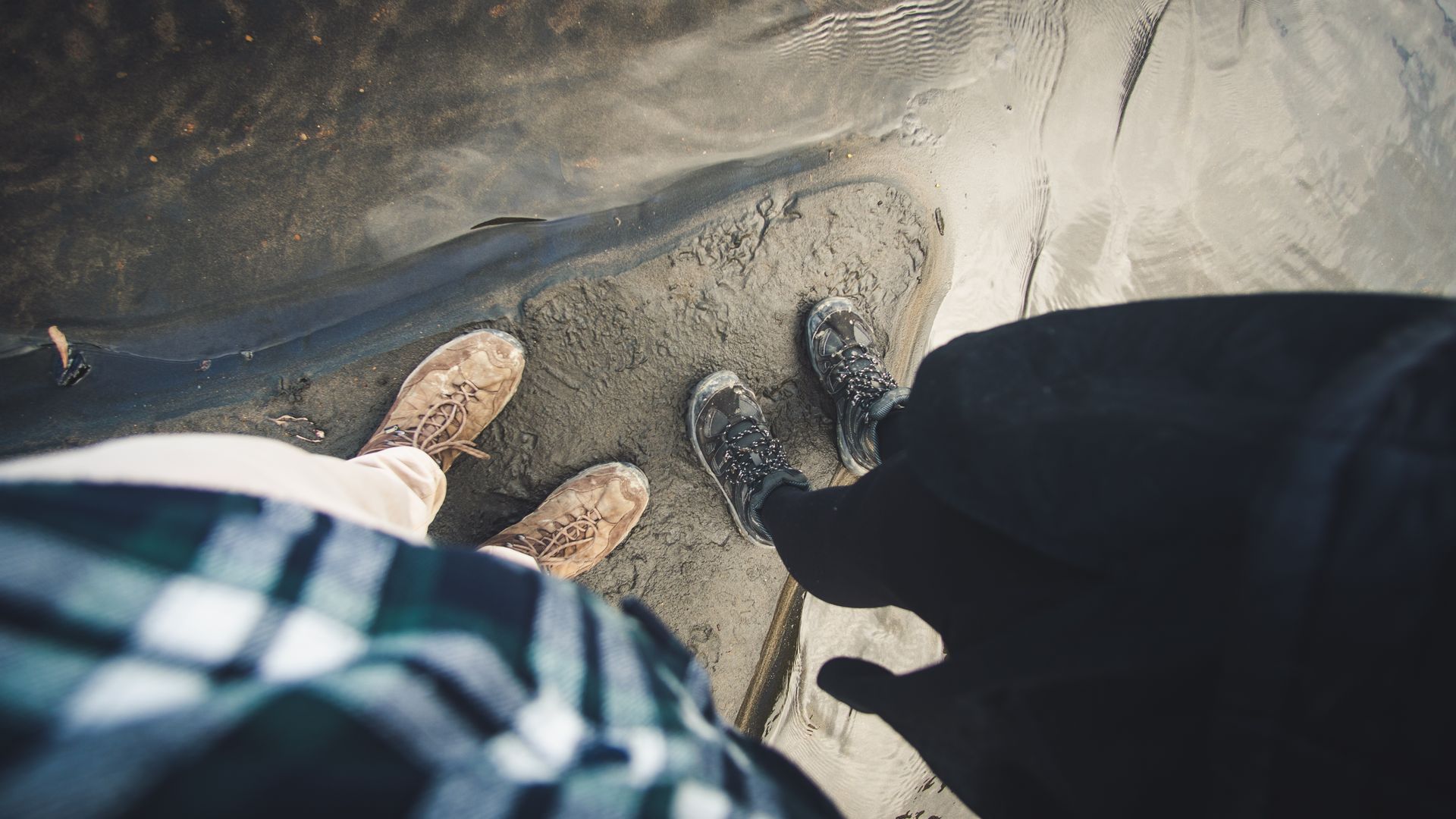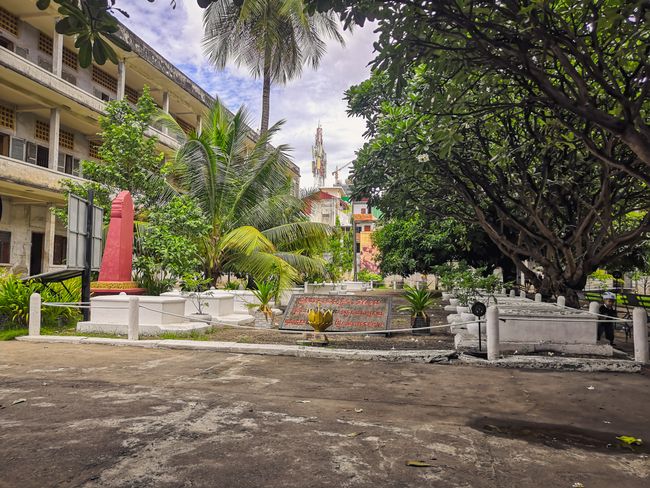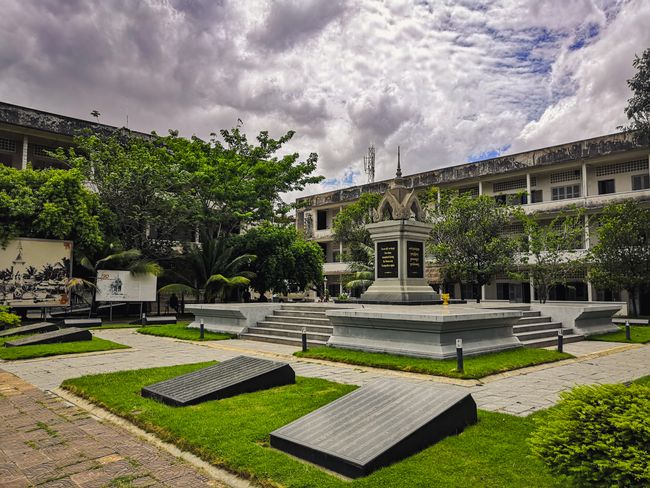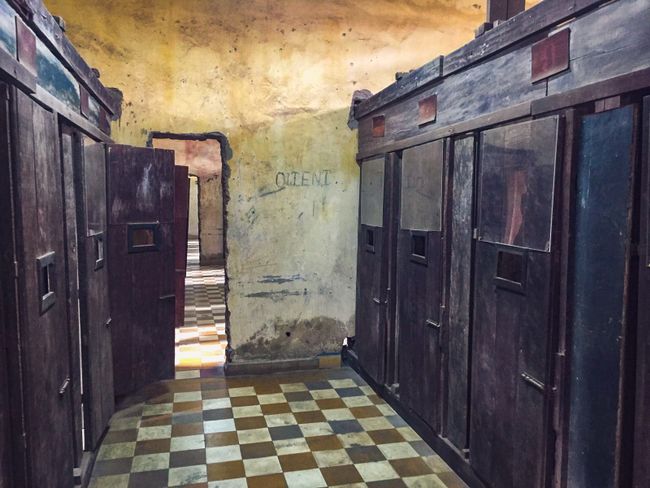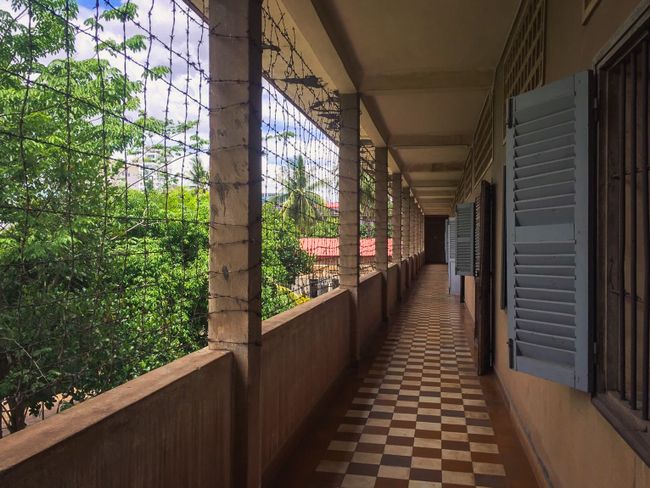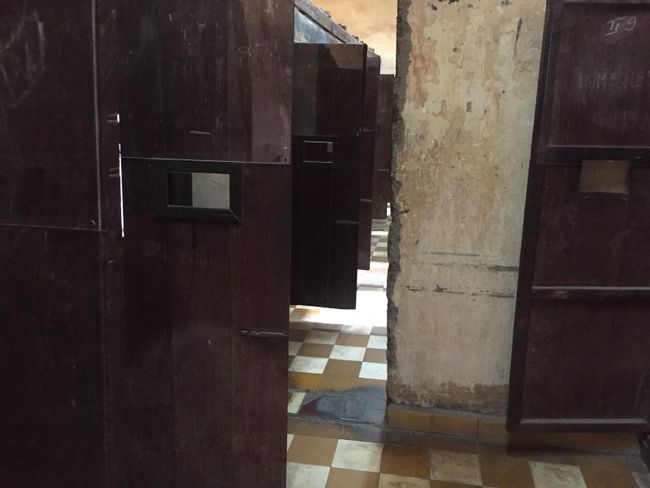Tag 57 - oppressive
प्रकाशित: 01.07.2019
समाचारपत्रस्य सदस्यतां गृहाण
26.06.19
As planned yesterday, today we want to visit the S-21 torture prison, which is now a museum that reminds of the crimes of the Khmer Rouge. Before we set off, relatively early, we fortify ourselves with a Mexican breakfast and a baguette with bacon and salad. The 30-minute walk - once again we were too stingy to take a tuk-tuk - to the prison proves, like many walks we have taken here, to be very worthwhile when it comes to absorbing a bit of authentic city atmosphere. We pass by a lot of greenery, inviting cafes, and street stalls.
After a shorter time than expected, we reach our destination, buy the tickets, and, as strongly recommended online, an audio guide that takes you through the museum. At first impression, the complex only marginally resembles a prison in the true sense. This is because, as we learn during the first stations, the buildings were formerly the gymnasium of Phnom Penh, which was converted into a prison due to its position in the city and condition. Immediately after that, we visit the most oppressive rooms of the entire facility, namely those where the torture of the inmates took place. In addition, the Vietnamese troops, during the liberation of Cambodia, found the last victims of the prison in these rooms (fourteen) for whom the rescuers unfortunately arrived too late. Fourteen memorial stones were erected in front of the first buildings for these fourteen individuals.
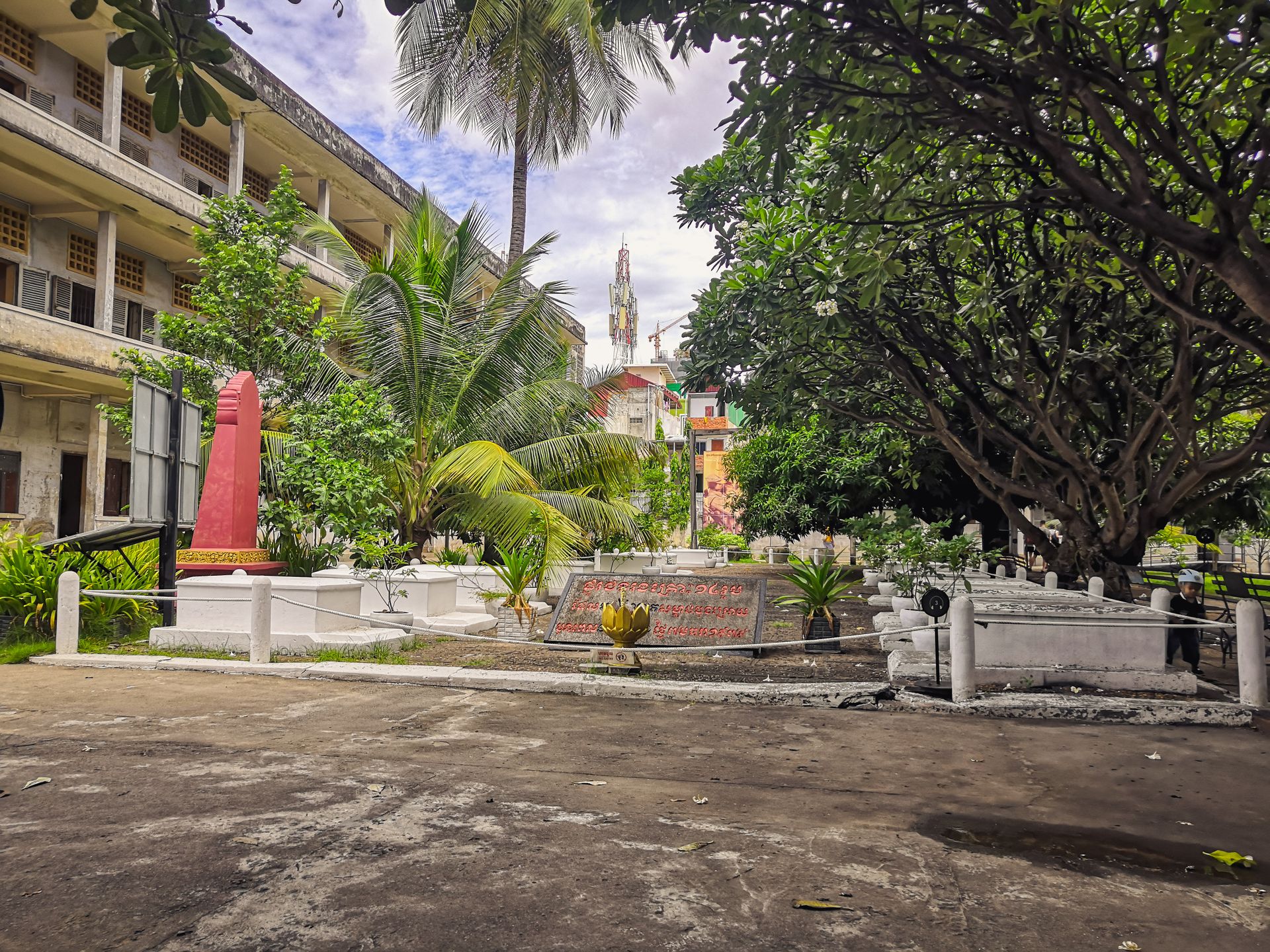
In addition to the original beds, shackles, and ammunition boxes (for performing bodily functions), these rooms also exhibit photos of the dead that were taken by a Vietnamese war photographer directly upon the discovery of the prison. They show the victims still tied to the bed, covered in blood, and dead (by the way, the audio guide also points out very disturbing rooms, images, and stories that can be skipped if desired).
We move on to the next section, where thousands of photos of prisoners can be found, taken when they were admitted to the prison. Particularly emotional are the individual fates that are presented, some of which are spoken into our ears by the seven survivors (out of 20,000).
After a short break and drink, we continue into the next building, which is almost entirely in the same condition as the Vietnamese found it - the front of the building, including the balustrades, is covered with barbed wire netting because some inmates tried to free themselves from torture by jumping from the 3rd floor. On the lower floors, you can find individual cells that are only about 2 square meters in size. Similar cells can also be found on the second floor, but this time they are made of wood, not bricks.

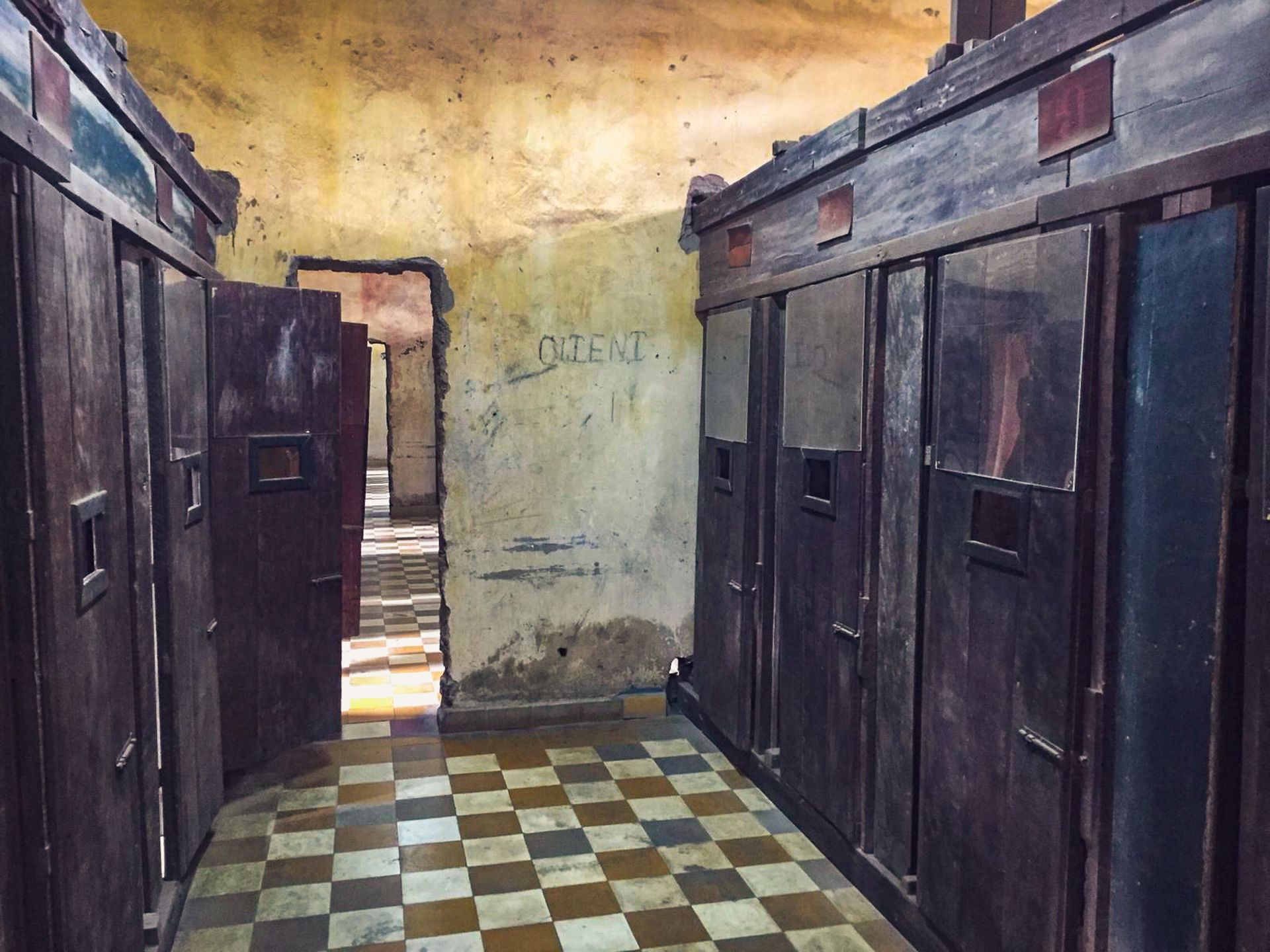
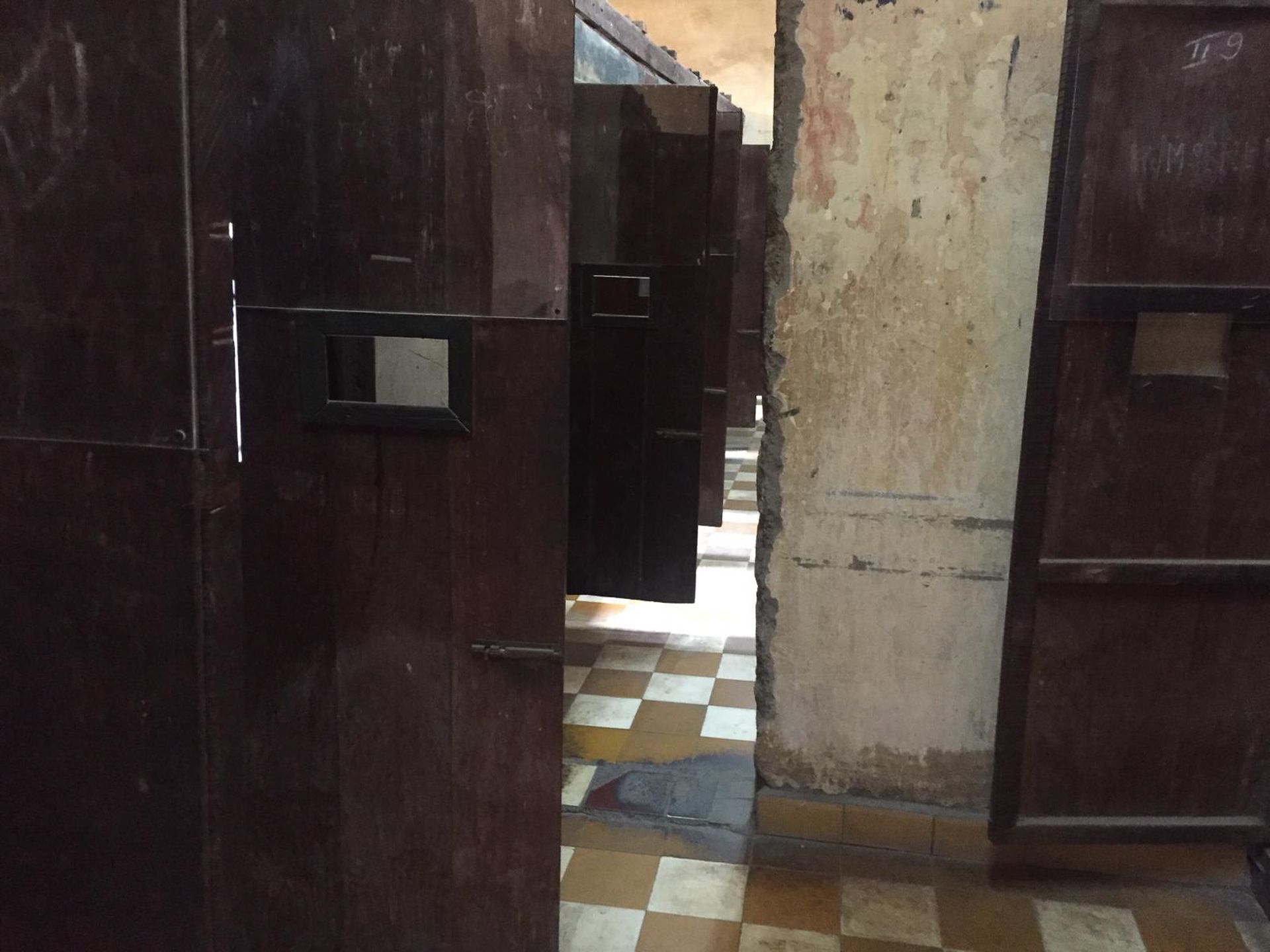
We enter the last building, where you can examine the torture instruments that were used, which strongly resemble medieval methods. There are also exhibited drawings made by one of the seven survivors, showing the torture methods and life in the prison. In the very last room, you are facing a small shrine and several glass display cases containing the bones and, above all, skulls of some of the deceased.
As expected, we leave the building quite shaken, take a look at the large memorial stones in the green courtyard, and head towards the exit. On the way, we pass two elderly men sitting at a small table with brochures and books displayed on it. These are two survivors. Unlike many other tourists, we refrain from taking a photo with the gentlemen - we couldn't really understand the purpose behind it.
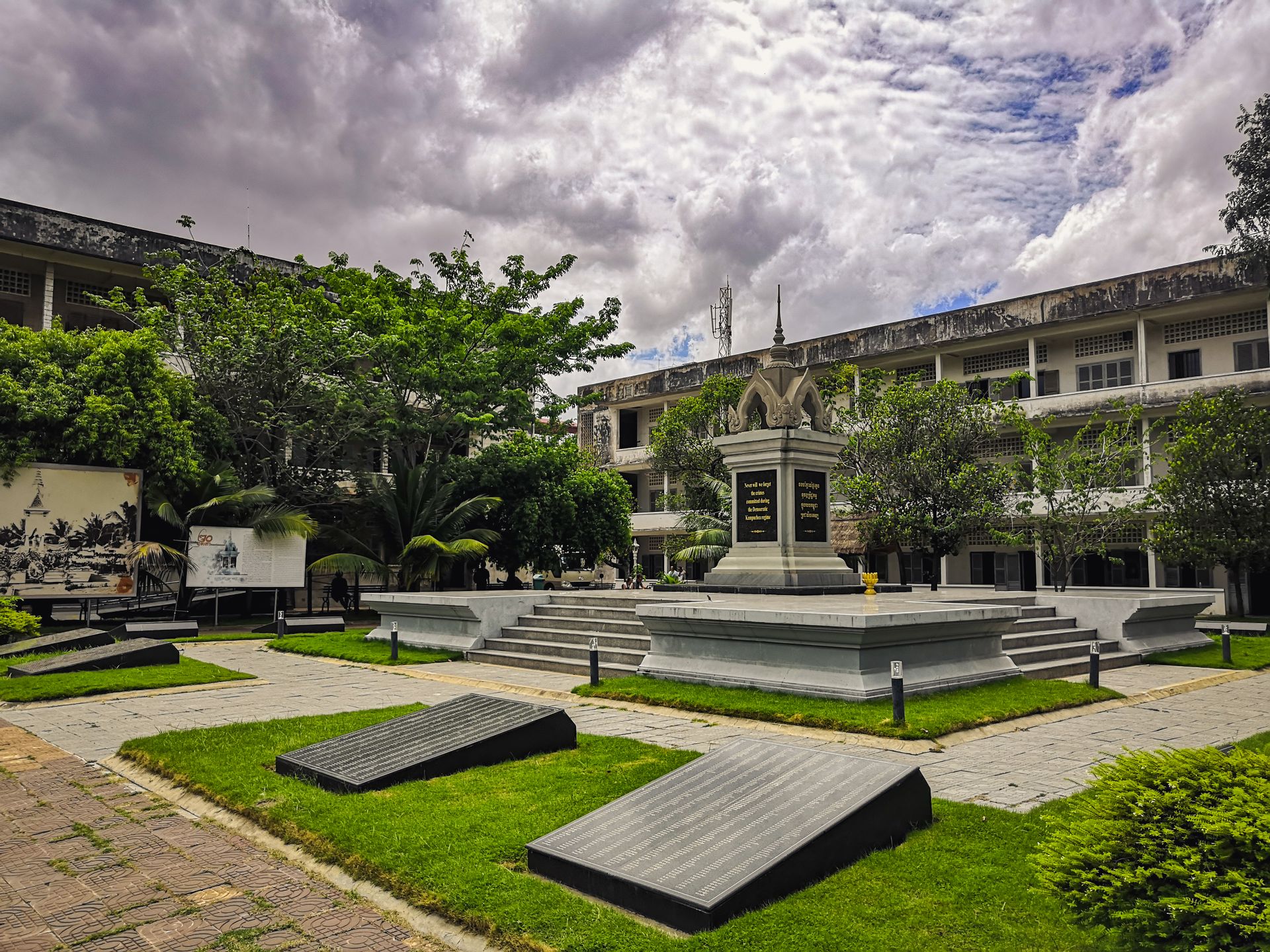
We leave the area and treat ourselves to a cold one by the roadside to relax. On the way back, we buy some fried snacks, of which we still don't know what they contain.
When we arrive at our hotel, we pack our backpacks and then make our way back to the delicious street food kitchen in the evening, where you can get Cambodian noodles and fried rice. Once again, we are convinced and, after a short relaxing stroll, go to bed well satisfied.
- Jonna & Alex
समाचारपत्रस्य सदस्यतां गृहाण
उत्तरम्
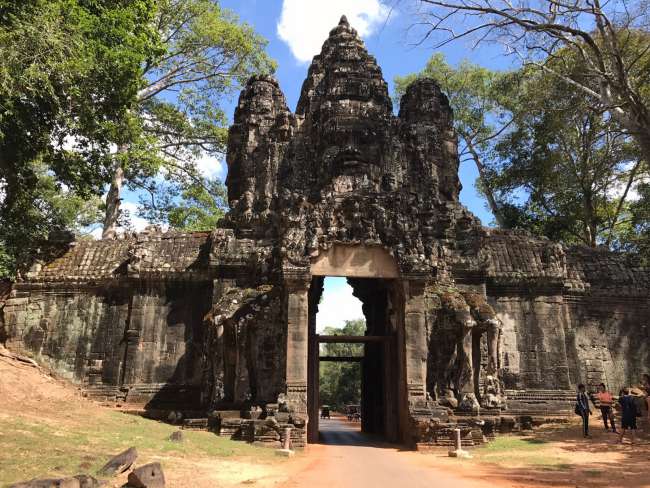
यात्राप्रतिवेदनानि कम्बोडिया
